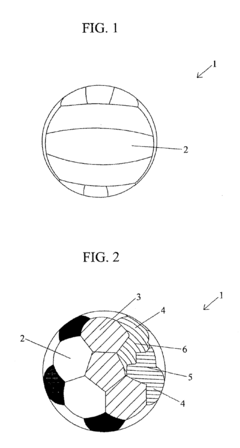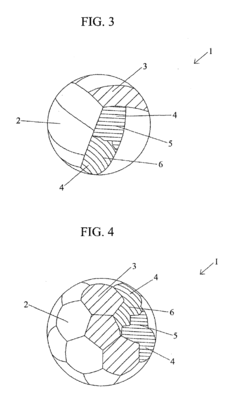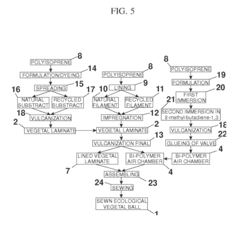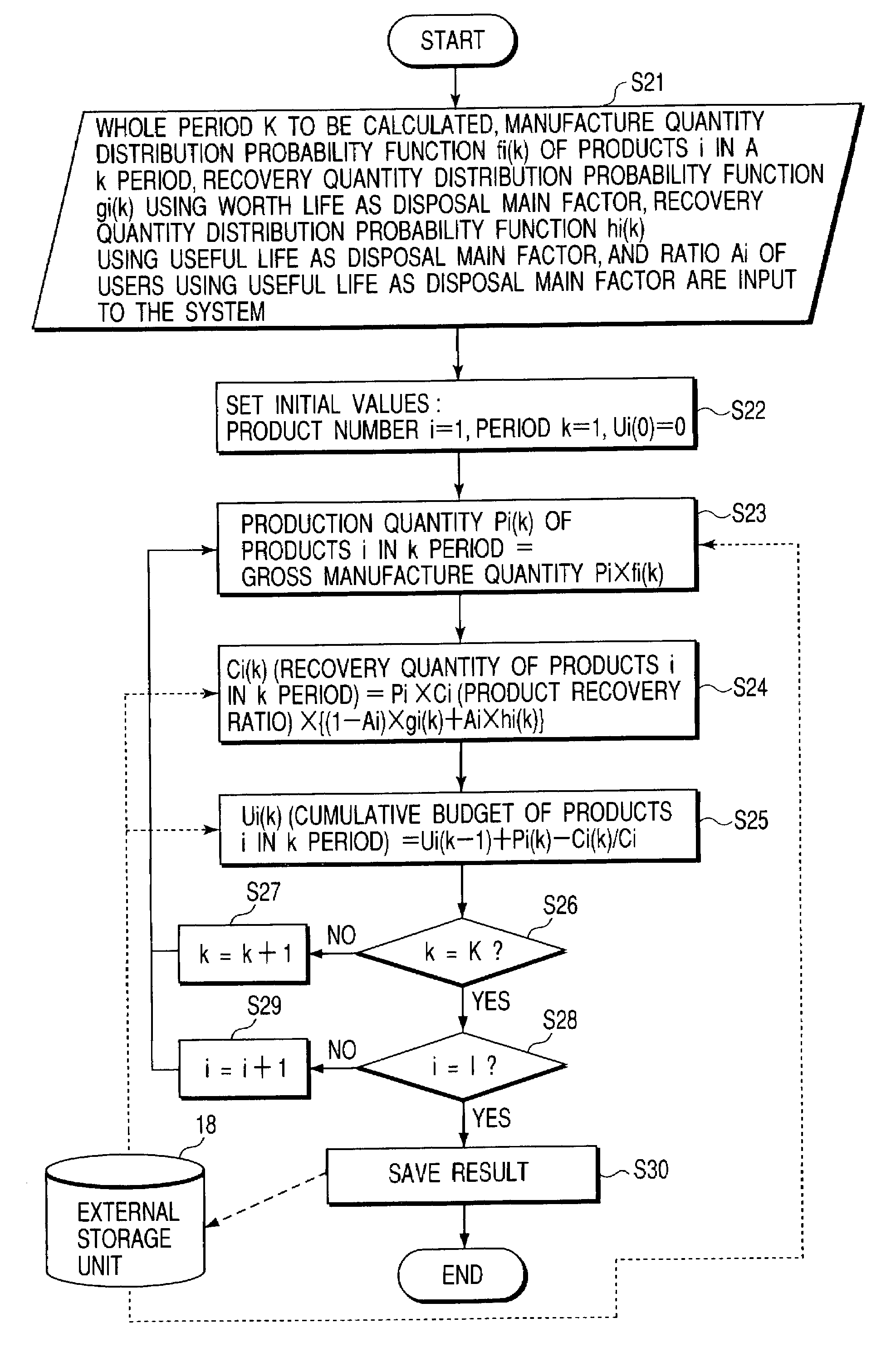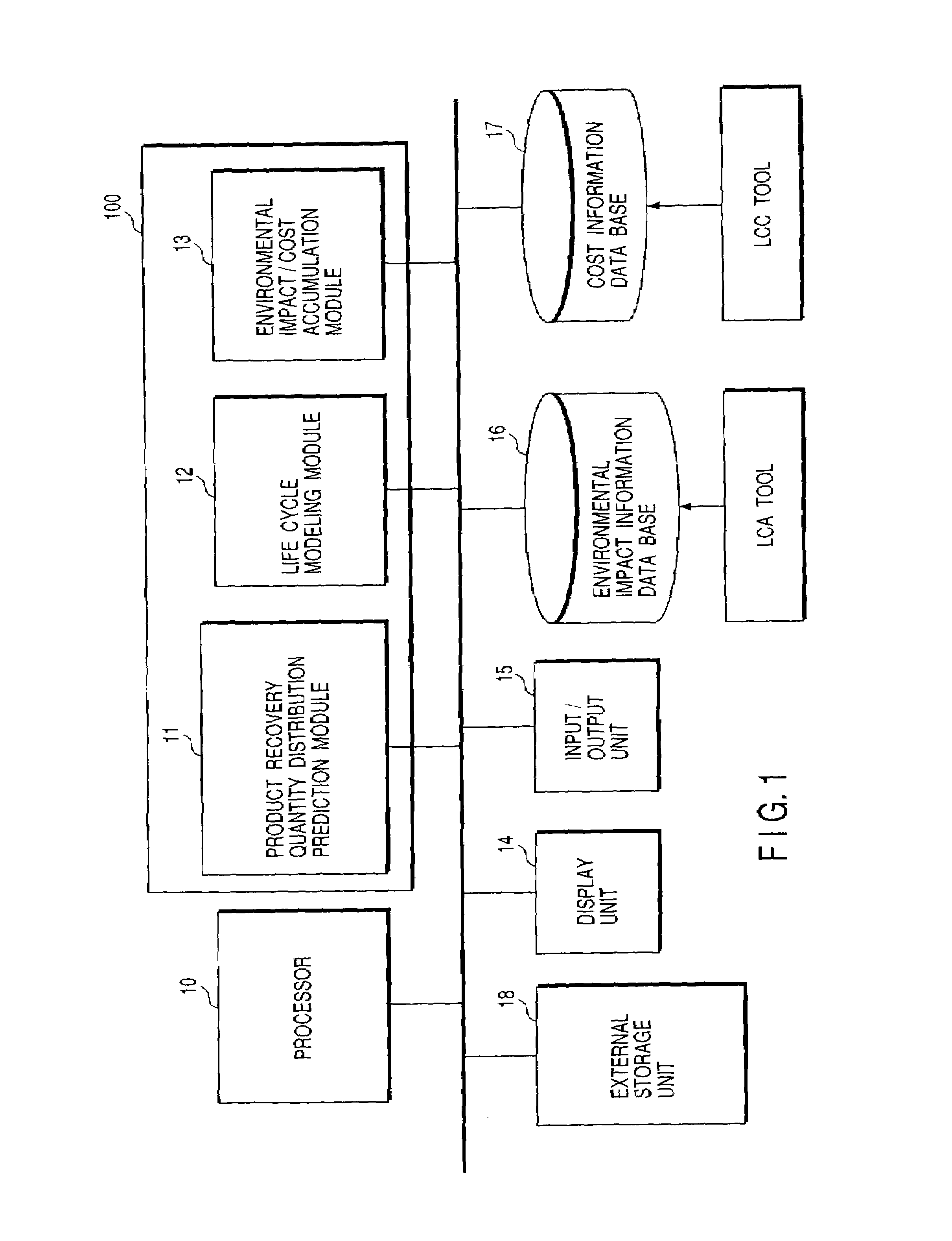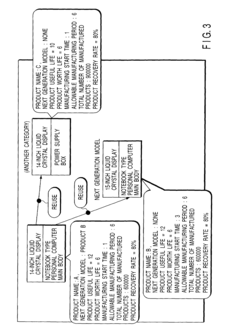Environmental Impact Assessment of Barium Hydroxide in Ecosystems
AUG 1, 20259 MIN READ
Generate Your Research Report Instantly with AI Agent
Patsnap Eureka helps you evaluate technical feasibility & market potential.
Barium Hydroxide EIA Background and Objectives
Environmental Impact Assessment (EIA) of barium hydroxide in ecosystems has become increasingly important as industrial applications of this compound continue to expand. Barium hydroxide, a strong alkaline substance, is widely used in various industries, including petroleum refining, sugar refining, and the production of synthetic rubber. The growing concern over its potential environmental effects necessitates a comprehensive evaluation of its impact on ecosystems.
The primary objective of this EIA is to thoroughly examine the fate and behavior of barium hydroxide in different environmental compartments, including soil, water, and air. This assessment aims to identify potential risks associated with its release into the environment and evaluate the long-term consequences on ecosystem health and biodiversity. By understanding these impacts, we can develop appropriate mitigation strategies and inform policy decisions regarding the use and disposal of barium hydroxide.
The historical context of barium hydroxide usage provides valuable insights into the evolution of environmental concerns surrounding this compound. Initially, the focus was primarily on its industrial applications, with limited consideration for environmental implications. However, as awareness of environmental issues grew in the latter half of the 20th century, attention shifted towards understanding the potential ecological risks associated with barium hydroxide.
Recent technological advancements have enabled more precise detection and measurement of barium hydroxide in environmental samples, allowing for more accurate assessments of its distribution and persistence in ecosystems. These developments have paved the way for more comprehensive EIAs, incorporating sophisticated modeling techniques and advanced analytical methods to predict and evaluate environmental impacts.
The scope of this EIA encompasses a wide range of ecological aspects, including the effects of barium hydroxide on soil chemistry, aquatic ecosystems, and terrestrial flora and fauna. It also considers potential bioaccumulation and biomagnification processes in food chains, as well as possible impacts on human health through environmental exposure pathways.
Furthermore, this assessment aims to explore the interactions between barium hydroxide and other environmental pollutants, as synergistic or antagonistic effects may significantly influence overall ecosystem impacts. By adopting a holistic approach, we can better understand the complex interplay between barium hydroxide and various environmental factors.
Ultimately, this EIA seeks to provide a solid scientific foundation for informed decision-making regarding the use, management, and regulation of barium hydroxide. By identifying potential environmental risks and proposing effective mitigation measures, we can work towards minimizing the ecological footprint of this compound while balancing industrial needs and environmental protection.
The primary objective of this EIA is to thoroughly examine the fate and behavior of barium hydroxide in different environmental compartments, including soil, water, and air. This assessment aims to identify potential risks associated with its release into the environment and evaluate the long-term consequences on ecosystem health and biodiversity. By understanding these impacts, we can develop appropriate mitigation strategies and inform policy decisions regarding the use and disposal of barium hydroxide.
The historical context of barium hydroxide usage provides valuable insights into the evolution of environmental concerns surrounding this compound. Initially, the focus was primarily on its industrial applications, with limited consideration for environmental implications. However, as awareness of environmental issues grew in the latter half of the 20th century, attention shifted towards understanding the potential ecological risks associated with barium hydroxide.
Recent technological advancements have enabled more precise detection and measurement of barium hydroxide in environmental samples, allowing for more accurate assessments of its distribution and persistence in ecosystems. These developments have paved the way for more comprehensive EIAs, incorporating sophisticated modeling techniques and advanced analytical methods to predict and evaluate environmental impacts.
The scope of this EIA encompasses a wide range of ecological aspects, including the effects of barium hydroxide on soil chemistry, aquatic ecosystems, and terrestrial flora and fauna. It also considers potential bioaccumulation and biomagnification processes in food chains, as well as possible impacts on human health through environmental exposure pathways.
Furthermore, this assessment aims to explore the interactions between barium hydroxide and other environmental pollutants, as synergistic or antagonistic effects may significantly influence overall ecosystem impacts. By adopting a holistic approach, we can better understand the complex interplay between barium hydroxide and various environmental factors.
Ultimately, this EIA seeks to provide a solid scientific foundation for informed decision-making regarding the use, management, and regulation of barium hydroxide. By identifying potential environmental risks and proposing effective mitigation measures, we can work towards minimizing the ecological footprint of this compound while balancing industrial needs and environmental protection.
Market Demand Analysis for Barium Hydroxide
The market demand for barium hydroxide has been steadily growing, driven by its diverse applications across various industries. In the chemical sector, barium hydroxide serves as a crucial raw material for the production of barium salts, which find extensive use in the manufacturing of lubricants, plastics, and rubber products. The increasing demand for these end-products has consequently boosted the market for barium hydroxide.
The construction industry represents another significant consumer of barium hydroxide, particularly in the production of specialty cements and concrete additives. As global infrastructure development continues to expand, especially in emerging economies, the demand for high-performance construction materials incorporating barium hydroxide is expected to rise.
In the environmental sector, barium hydroxide has gained traction as an effective agent for carbon dioxide capture and sequestration. With growing concerns over climate change and stringent regulations on greenhouse gas emissions, industries are increasingly adopting carbon capture technologies, thereby driving the demand for barium hydroxide.
The electronics industry also contributes to the market growth of barium hydroxide. It is used in the manufacturing of cathode ray tubes, ceramic capacitors, and other electronic components. Although the demand from this sector has somewhat plateaued due to the shift towards flat-screen technologies, it still remains a significant consumer.
Geographically, Asia-Pacific region, particularly China and India, has emerged as the largest market for barium hydroxide, owing to rapid industrialization and infrastructure development. North America and Europe follow, with steady demand from established chemical and environmental industries.
Market analysts project a compound annual growth rate (CAGR) for the global barium hydroxide market in the range of 4-5% over the next five years. This growth is attributed to the expanding applications in environmental remediation, increasing demand from the construction sector, and the ongoing research into new applications of barium hydroxide in advanced materials.
However, the market faces challenges such as the toxicity of barium compounds and stringent regulations governing their use and disposal. These factors necessitate careful handling and may limit the growth potential in certain applications. Additionally, the availability of alternatives for some applications poses a competitive threat to the barium hydroxide market.
The construction industry represents another significant consumer of barium hydroxide, particularly in the production of specialty cements and concrete additives. As global infrastructure development continues to expand, especially in emerging economies, the demand for high-performance construction materials incorporating barium hydroxide is expected to rise.
In the environmental sector, barium hydroxide has gained traction as an effective agent for carbon dioxide capture and sequestration. With growing concerns over climate change and stringent regulations on greenhouse gas emissions, industries are increasingly adopting carbon capture technologies, thereby driving the demand for barium hydroxide.
The electronics industry also contributes to the market growth of barium hydroxide. It is used in the manufacturing of cathode ray tubes, ceramic capacitors, and other electronic components. Although the demand from this sector has somewhat plateaued due to the shift towards flat-screen technologies, it still remains a significant consumer.
Geographically, Asia-Pacific region, particularly China and India, has emerged as the largest market for barium hydroxide, owing to rapid industrialization and infrastructure development. North America and Europe follow, with steady demand from established chemical and environmental industries.
Market analysts project a compound annual growth rate (CAGR) for the global barium hydroxide market in the range of 4-5% over the next five years. This growth is attributed to the expanding applications in environmental remediation, increasing demand from the construction sector, and the ongoing research into new applications of barium hydroxide in advanced materials.
However, the market faces challenges such as the toxicity of barium compounds and stringent regulations governing their use and disposal. These factors necessitate careful handling and may limit the growth potential in certain applications. Additionally, the availability of alternatives for some applications poses a competitive threat to the barium hydroxide market.
Current Status and Challenges in Barium Hydroxide EIA
The current status of Environmental Impact Assessment (EIA) for barium hydroxide in ecosystems reveals a complex landscape of challenges and advancements. Barium hydroxide, a compound widely used in various industrial processes, has garnered increasing attention due to its potential environmental implications. Recent studies have highlighted the need for more comprehensive EIA methodologies specifically tailored to assess the impact of barium hydroxide on diverse ecosystems.
One of the primary challenges in conducting EIAs for barium hydroxide is the lack of standardized protocols across different regions and ecosystems. This inconsistency hampers the ability to compare and aggregate data from various studies, limiting the development of a global understanding of the compound's environmental effects. Additionally, the long-term impacts of barium hydroxide on soil and aquatic ecosystems remain poorly understood, necessitating extended monitoring periods and more sophisticated analytical techniques.
The bioaccumulation potential of barium hydroxide in food chains presents another significant challenge. Current assessment methods often struggle to accurately predict the compound's behavior in complex ecological networks, leading to potential underestimation of its long-term environmental risks. This gap in knowledge underscores the need for more advanced modeling techniques that can simulate the movement and transformation of barium hydroxide through various trophic levels.
Technological limitations in detection and quantification of barium hydroxide at trace levels in environmental samples continue to pose challenges for accurate EIAs. While recent advancements in analytical chemistry have improved detection limits, there is still a pressing need for more sensitive and cost-effective methods that can be deployed in field conditions. This is particularly crucial for assessing the compound's impact in remote or ecologically sensitive areas where traditional laboratory-based analyses may not be feasible.
The variability in environmental conditions across different ecosystems further complicates the EIA process for barium hydroxide. Factors such as pH, temperature, and the presence of other chemical compounds can significantly influence the behavior and toxicity of barium hydroxide. Developing EIA methodologies that can account for these site-specific variables while maintaining comparability across studies remains a key challenge in the field.
Despite these challenges, recent progress in environmental toxicology and ecological modeling has paved the way for more comprehensive EIAs. Emerging approaches, such as the integration of genomic and metabolomic data, offer promising avenues for assessing the subtle, long-term effects of barium hydroxide on ecosystem health. Additionally, the application of machine learning algorithms to analyze complex environmental datasets is enhancing our ability to identify patterns and predict potential impacts with greater accuracy.
One of the primary challenges in conducting EIAs for barium hydroxide is the lack of standardized protocols across different regions and ecosystems. This inconsistency hampers the ability to compare and aggregate data from various studies, limiting the development of a global understanding of the compound's environmental effects. Additionally, the long-term impacts of barium hydroxide on soil and aquatic ecosystems remain poorly understood, necessitating extended monitoring periods and more sophisticated analytical techniques.
The bioaccumulation potential of barium hydroxide in food chains presents another significant challenge. Current assessment methods often struggle to accurately predict the compound's behavior in complex ecological networks, leading to potential underestimation of its long-term environmental risks. This gap in knowledge underscores the need for more advanced modeling techniques that can simulate the movement and transformation of barium hydroxide through various trophic levels.
Technological limitations in detection and quantification of barium hydroxide at trace levels in environmental samples continue to pose challenges for accurate EIAs. While recent advancements in analytical chemistry have improved detection limits, there is still a pressing need for more sensitive and cost-effective methods that can be deployed in field conditions. This is particularly crucial for assessing the compound's impact in remote or ecologically sensitive areas where traditional laboratory-based analyses may not be feasible.
The variability in environmental conditions across different ecosystems further complicates the EIA process for barium hydroxide. Factors such as pH, temperature, and the presence of other chemical compounds can significantly influence the behavior and toxicity of barium hydroxide. Developing EIA methodologies that can account for these site-specific variables while maintaining comparability across studies remains a key challenge in the field.
Despite these challenges, recent progress in environmental toxicology and ecological modeling has paved the way for more comprehensive EIAs. Emerging approaches, such as the integration of genomic and metabolomic data, offer promising avenues for assessing the subtle, long-term effects of barium hydroxide on ecosystem health. Additionally, the application of machine learning algorithms to analyze complex environmental datasets is enhancing our ability to identify patterns and predict potential impacts with greater accuracy.
Existing EIA Approaches for Barium Hydroxide
01 Waste treatment and recycling
Barium hydroxide is used in waste treatment processes, particularly for neutralizing acidic waste and removing sulfates from industrial effluents. While this application can help reduce environmental pollution, proper handling and disposal of the resulting barium-containing sludge is crucial to prevent secondary contamination.- Waste treatment and recycling: Barium hydroxide is used in waste treatment processes, particularly for treating acidic waste streams and removing sulfates. While this can help neutralize harmful substances, it also creates barium-containing waste that requires proper disposal. Recycling methods are being developed to recover and reuse barium compounds from industrial processes, potentially reducing environmental impact.
- Water and soil contamination: The release of barium hydroxide into the environment can lead to water and soil contamination. It can increase soil pH and potentially affect plant growth. In water bodies, it may contribute to increased alkalinity and impact aquatic ecosystems. Proper handling and disposal methods are crucial to minimize these risks.
- Air pollution and emissions control: Barium hydroxide can be used in air pollution control systems, particularly for removing sulfur dioxide from industrial emissions. While this application helps reduce harmful emissions, the production and handling of barium hydroxide itself may contribute to air pollution if not properly managed. Improved production methods and emission control technologies are being developed to address this issue.
- Industrial applications and alternatives: Barium hydroxide has various industrial applications, including in the production of lubricants, ceramics, and glass. Research is ongoing to find more environmentally friendly alternatives or to optimize processes to reduce the environmental impact of barium hydroxide use. This includes developing new materials or modifying existing processes to minimize waste generation and energy consumption.
- Environmental monitoring and risk assessment: Efforts are being made to improve environmental monitoring techniques for barium compounds, including barium hydroxide. This involves developing more sensitive detection methods and establishing appropriate environmental standards. Risk assessment studies are conducted to better understand the long-term effects of barium hydroxide on ecosystems and human health, informing regulatory decisions and environmental management strategies.
02 Impact on soil and water
The release of barium hydroxide into the environment can affect soil and water quality. It can increase soil pH and potentially alter soil structure. In water bodies, it may contribute to increased alkalinity and affect aquatic ecosystems. Proper containment and treatment of barium hydroxide-containing waste is essential to mitigate these impacts.Expand Specific Solutions03 Air pollution control
Barium hydroxide is used in air pollution control systems, particularly for removing sulfur dioxide from flue gases. While this application helps reduce air pollution, the process generates barium sulfite or sulfate, which requires proper handling and disposal to prevent environmental contamination.Expand Specific Solutions04 Industrial applications and environmental considerations
Barium hydroxide is used in various industrial processes, including the production of lubricants, ceramics, and other chemicals. These applications can potentially lead to environmental contamination if not properly managed. Implementing closed-loop systems and efficient recovery processes can help minimize the environmental impact of these industrial uses.Expand Specific Solutions05 Remediation and environmental monitoring
To address the potential environmental impacts of barium hydroxide, remediation techniques and environmental monitoring programs are essential. These may include soil and water treatment methods, as well as the development of sensitive analytical techniques for detecting and quantifying barium compounds in environmental samples.Expand Specific Solutions
Key Players in Environmental Impact Assessment Industry
The environmental impact assessment of barium hydroxide in ecosystems is an emerging field in its early development stage. The market size is relatively small but growing as environmental concerns increase. The technology is still in its infancy, with varying levels of maturity among key players. Research institutions like Nanjing Institute of Environmental Science and universities such as Beijing Normal University and Dalian University of Technology are at the forefront, conducting fundamental studies. Companies like Veolia Water Solutions & Technologies Support SAS and Binzhou Kunbao Chemical Co., Ltd. are beginning to apply this research to practical applications, though the technology remains largely experimental. The competitive landscape is characterized by collaboration between academia and industry, with a focus on developing standardized assessment methodologies and mitigation strategies.
Nanjing Institute of Environmental Science
Technical Solution: The Nanjing Institute of Environmental Science has developed a comprehensive approach to assess the environmental impact of barium hydroxide in ecosystems. Their method involves multi-level ecological risk assessment, combining laboratory experiments with field studies. They utilize advanced analytical techniques such as ICP-MS for precise quantification of barium in various environmental matrices[1]. The institute has also developed biomarkers to evaluate the effects of barium hydroxide on aquatic organisms, focusing on enzyme activities and oxidative stress indicators[3]. Their research extends to soil ecosystems, where they employ soil microbial community analysis and plant toxicity tests to evaluate the long-term impacts of barium hydroxide contamination[5].
Strengths: Comprehensive approach combining multiple assessment methods; expertise in both aquatic and terrestrial ecosystems. Weaknesses: May require extensive resources and time for thorough assessments; potential limitations in extrapolating lab results to complex real-world ecosystems.
Nanjing University
Technical Solution: Nanjing University has pioneered an integrated approach to assess the environmental impact of barium hydroxide, focusing on its fate and transport in aquatic systems. Their methodology incorporates advanced modeling techniques, including machine learning algorithms, to predict the distribution and bioaccumulation of barium in food webs[2]. The university has developed novel in-situ sensors for real-time monitoring of barium levels in water bodies, enabling rapid response to potential contamination events[4]. Additionally, they have conducted extensive ecotoxicological studies, evaluating the effects of barium hydroxide on various trophic levels, from phytoplankton to fish, to understand ecosystem-wide impacts[6].
Strengths: Cutting-edge technology integration; comprehensive food web analysis. Weaknesses: High reliance on complex modeling may introduce uncertainties; potential challenges in scaling up in-situ monitoring systems for large-scale assessments.
Critical Innovations in Ecosystem Impact Analysis
Method for Manufacturing an Ecological Ball Made of a Vegetable Laminate for the Practice of Sports, and Said Ball Produced by Sewing, Glueing/Stamping or Sewing/Stamping
PatentInactiveUS20120277043A1
Innovation
- A sustainable ecological ball made of latex-based vegetal laminate, produced through sewing, sewing/stamping, or gluing/stamping, using natural filaments and bi-polymer air chambers, which are recyclable and free from harmful residues, promoting the use of renewable resources and community involvement.
Environmental impact estimation method and apparatus
PatentInactiveUS7412365B2
Innovation
- An environmental impact estimation method and apparatus that involves life cycle modeling, predicting the recovery quantity of reuse objects and recycle materials, and evaluating environmental impact and cost based on these predictions, using a computer program to store and process information related to reuse and recycle objects, and selecting suitable parts for new product assembly.
Regulatory Framework for Chemical EIAs
The regulatory framework for chemical Environmental Impact Assessments (EIAs) plays a crucial role in ensuring the safe use and management of substances like barium hydroxide in ecosystems. This framework is typically established at national and international levels, with various agencies and organizations contributing to its development and implementation.
At the international level, organizations such as the United Nations Environment Programme (UNEP) and the Organisation for Economic Co-operation and Development (OECD) provide guidelines and best practices for conducting chemical EIAs. These guidelines often serve as a foundation for national regulatory frameworks, promoting consistency and harmonization across different countries.
In the United States, the Environmental Protection Agency (EPA) is the primary regulatory body responsible for overseeing chemical EIAs. The EPA's regulatory framework is based on several key pieces of legislation, including the Toxic Substances Control Act (TSCA) and the National Environmental Policy Act (NEPA). These laws establish the requirements for assessing the environmental impacts of chemicals and provide the legal basis for enforcement actions.
The European Union has developed a comprehensive regulatory framework for chemical EIAs through the Registration, Evaluation, Authorisation and Restriction of Chemicals (REACH) regulation. REACH requires manufacturers and importers to assess the risks associated with the use of chemicals and to implement appropriate risk management measures.
Many other countries have established their own regulatory frameworks for chemical EIAs, often drawing inspiration from international guidelines and adapting them to local contexts. For example, Canada's Chemical Management Plan and Australia's National Industrial Chemicals Notification and Assessment Scheme (NICNAS) provide comprehensive approaches to assessing and managing chemical risks.
The regulatory framework for chemical EIAs typically includes several key components. These may include requirements for data collection and analysis, risk assessment methodologies, exposure modeling, and criteria for determining acceptable levels of environmental impact. The framework may also specify the types of chemicals that require assessment, the timeline for conducting assessments, and the procedures for reviewing and approving EIA reports.
Enforcement mechanisms are an essential part of the regulatory framework. These may include penalties for non-compliance, requirements for remediation in cases of environmental damage, and provisions for ongoing monitoring and reporting. Many regulatory frameworks also incorporate mechanisms for public participation and stakeholder engagement in the EIA process, recognizing the importance of transparency and community input in environmental decision-making.
As scientific understanding of chemical impacts on ecosystems evolves, regulatory frameworks for chemical EIAs must adapt accordingly. This often involves periodic reviews and updates to ensure that the framework remains effective in protecting environmental and human health while balancing the needs of industry and economic development.
At the international level, organizations such as the United Nations Environment Programme (UNEP) and the Organisation for Economic Co-operation and Development (OECD) provide guidelines and best practices for conducting chemical EIAs. These guidelines often serve as a foundation for national regulatory frameworks, promoting consistency and harmonization across different countries.
In the United States, the Environmental Protection Agency (EPA) is the primary regulatory body responsible for overseeing chemical EIAs. The EPA's regulatory framework is based on several key pieces of legislation, including the Toxic Substances Control Act (TSCA) and the National Environmental Policy Act (NEPA). These laws establish the requirements for assessing the environmental impacts of chemicals and provide the legal basis for enforcement actions.
The European Union has developed a comprehensive regulatory framework for chemical EIAs through the Registration, Evaluation, Authorisation and Restriction of Chemicals (REACH) regulation. REACH requires manufacturers and importers to assess the risks associated with the use of chemicals and to implement appropriate risk management measures.
Many other countries have established their own regulatory frameworks for chemical EIAs, often drawing inspiration from international guidelines and adapting them to local contexts. For example, Canada's Chemical Management Plan and Australia's National Industrial Chemicals Notification and Assessment Scheme (NICNAS) provide comprehensive approaches to assessing and managing chemical risks.
The regulatory framework for chemical EIAs typically includes several key components. These may include requirements for data collection and analysis, risk assessment methodologies, exposure modeling, and criteria for determining acceptable levels of environmental impact. The framework may also specify the types of chemicals that require assessment, the timeline for conducting assessments, and the procedures for reviewing and approving EIA reports.
Enforcement mechanisms are an essential part of the regulatory framework. These may include penalties for non-compliance, requirements for remediation in cases of environmental damage, and provisions for ongoing monitoring and reporting. Many regulatory frameworks also incorporate mechanisms for public participation and stakeholder engagement in the EIA process, recognizing the importance of transparency and community input in environmental decision-making.
As scientific understanding of chemical impacts on ecosystems evolves, regulatory frameworks for chemical EIAs must adapt accordingly. This often involves periodic reviews and updates to ensure that the framework remains effective in protecting environmental and human health while balancing the needs of industry and economic development.
Ecological Risk Assessment Techniques
Ecological Risk Assessment Techniques for evaluating the environmental impact of barium hydroxide in ecosystems involve a systematic approach to identify, analyze, and characterize potential risks to ecological receptors. These techniques typically begin with problem formulation, where the assessment's scope, objectives, and potential stressors are defined. In this case, the focus would be on barium hydroxide and its potential effects on various ecosystem components.
The next step involves exposure assessment, which determines the extent and pattern of contact between barium hydroxide and ecological receptors. This includes analyzing the chemical's fate and transport in different environmental media, such as soil, water, and air. Researchers may use environmental modeling tools to predict the distribution and concentration of barium hydroxide in various ecosystem compartments over time.
Effects assessment is a crucial component of ecological risk assessment for barium hydroxide. This phase involves gathering and evaluating data on the toxicity of the compound to different species and ecological processes. Researchers may conduct laboratory studies, field observations, and literature reviews to understand the dose-response relationships and potential adverse effects on organisms, populations, and communities.
The integration of exposure and effects data leads to risk characterization, where the likelihood and magnitude of ecological impacts are estimated. This may involve comparing predicted environmental concentrations of barium hydroxide with toxicity thresholds for various species. Probabilistic risk assessment techniques, such as Monte Carlo simulations, can be employed to account for uncertainties in exposure and effects data.
Ecological risk assessment for barium hydroxide also considers the compound's potential to bioaccumulate in food chains and its long-term effects on ecosystem structure and function. This may involve studying trophic transfer, biomagnification, and potential impacts on keystone species or critical ecological processes.
To enhance the relevance and reliability of the assessment, field studies and monitoring programs may be implemented to validate model predictions and gather site-specific data. These studies can provide valuable insights into the actual behavior and impacts of barium hydroxide in real-world ecosystems.
Uncertainty analysis is an integral part of ecological risk assessment techniques. This involves identifying and quantifying sources of variability and uncertainty in the assessment process, such as data gaps, model assumptions, and natural variability in ecological systems. Sensitivity analyses can help prioritize research needs and improve the robustness of risk estimates.
The next step involves exposure assessment, which determines the extent and pattern of contact between barium hydroxide and ecological receptors. This includes analyzing the chemical's fate and transport in different environmental media, such as soil, water, and air. Researchers may use environmental modeling tools to predict the distribution and concentration of barium hydroxide in various ecosystem compartments over time.
Effects assessment is a crucial component of ecological risk assessment for barium hydroxide. This phase involves gathering and evaluating data on the toxicity of the compound to different species and ecological processes. Researchers may conduct laboratory studies, field observations, and literature reviews to understand the dose-response relationships and potential adverse effects on organisms, populations, and communities.
The integration of exposure and effects data leads to risk characterization, where the likelihood and magnitude of ecological impacts are estimated. This may involve comparing predicted environmental concentrations of barium hydroxide with toxicity thresholds for various species. Probabilistic risk assessment techniques, such as Monte Carlo simulations, can be employed to account for uncertainties in exposure and effects data.
Ecological risk assessment for barium hydroxide also considers the compound's potential to bioaccumulate in food chains and its long-term effects on ecosystem structure and function. This may involve studying trophic transfer, biomagnification, and potential impacts on keystone species or critical ecological processes.
To enhance the relevance and reliability of the assessment, field studies and monitoring programs may be implemented to validate model predictions and gather site-specific data. These studies can provide valuable insights into the actual behavior and impacts of barium hydroxide in real-world ecosystems.
Uncertainty analysis is an integral part of ecological risk assessment techniques. This involves identifying and quantifying sources of variability and uncertainty in the assessment process, such as data gaps, model assumptions, and natural variability in ecological systems. Sensitivity analyses can help prioritize research needs and improve the robustness of risk estimates.
Unlock deeper insights with Patsnap Eureka Quick Research — get a full tech report to explore trends and direct your research. Try now!
Generate Your Research Report Instantly with AI Agent
Supercharge your innovation with Patsnap Eureka AI Agent Platform!

